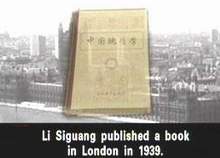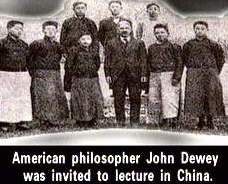 |
|
Songs of Youth (4)
Saving the Nation through Science |
| CCTV.COM 2002-11-22 11:11:53 |
|
 Zhan Tianyou, the most famous railway engineer in China, died in 1919. A giant star fell from the sky. As one of the earliest Chinese students studying abroad, he was the first Chinese accepted as a member of the American Engineers' Association. The pioneer in science was a model followed by a generation of Chinese youth. Zhan Tianyou, the most famous railway engineer in China, died in 1919. A giant star fell from the sky. As one of the earliest Chinese students studying abroad, he was the first Chinese accepted as a member of the American Engineers' Association. The pioneer in science was a model followed by a generation of Chinese youth.
At the beginning of the 20th century, achievements of Western civilization were introduced into China. Cars began to shuttle in the streets. Many large cities were illuminated by electric lights. Telephones transmitted more and more information. Many young people traveled far across the ocean, cherishing the dream of saving the nation through the development of science. They returned to China around 1919 and played important roles in the ensuing years. A scientific spirit began to grow in China. In 1918, Ren Hongjun, a Chinese mathematician, concluded his studies at Cornell University in the United States and returned to Shanghai.
A local newspaper greeted the young scholar with the headline "A Scientist Returned to Shanghai". Then the Chinese Society of Sciences, established in the United States three years before, was moved to Shanghai. It had more than 300 members.
The magazine Science we can see today was launched by the Chinese Society of Sciences. It was the only comprehensive scientific magazine published in China in those days.
It was also the first Chinese-language publication with the types set horizontally from the left to the right. Traditionally the types were set vertically from the right to the left.
In 1920, Li Siguang returned to China from Britain. Later he became the foremost geologist in China.
With his scientific research he repudiated the fallacy that China was an oil-poor country. Many specimens of ores can be seen in his former residence.
In the same year, Mao Yisheng obtained his doctor's degree in the United States. He gave up his abundant life there and returned to China. In the following dozens of years, this outstanding bridge expert performed one miracle after another. He was the architect of the world-famous Qiantang River Bridge.
 At the beginning of the 1920s, the political situation in China was in chaos. The tangled warfare among warlords caused distress to the south and north of China. In the meantime, a pluralistic scientific and cultural movement was going on vigorously. A number of intellectuals worked in the rural areas in a down-to-earth manner to save the nation through education. They were represented by Tao Xingzhi in South China and Yan Yangchu in North China. At the beginning of the 1920s, the political situation in China was in chaos. The tangled warfare among warlords caused distress to the south and north of China. In the meantime, a pluralistic scientific and cultural movement was going on vigorously. A number of intellectuals worked in the rural areas in a down-to-earth manner to save the nation through education. They were represented by Tao Xingzhi in South China and Yan Yangchu in North China.
Tao Xingzhi graduated from Columbia University in the United States. Like Hu Shi,he was a student of John Dewey, a well-known American educator.
After he returned to China, he tried a new teaching method that combined education, study and practice. John Dewey said Tao Xingzhi was his student, but he outshone him a thousand times.
Yan Yangchu graduated from Yale University. At first he worked to eliminate illiteracy among Chinese workers in France. After he returned to China, he conducted education among the common people and carried out reforms in rural areas in Dingxian County, Hebei Province.
From these textbooks we can visualize how this educator made painstaking efforts to promote education in the rural areas in China.
His successful experiments in the rural areas drew much attention from people of the same trade worldwide.
In 1943, Yan Yangchu and Einstein were chosen as two of the ten great men who had made the most revolutionary contributions to the modern world. He was the only man from the Orient who gained the special honour.
|
|
Editor: Inner Wu CCTV.com
|
|
|
|
|
|
 |









